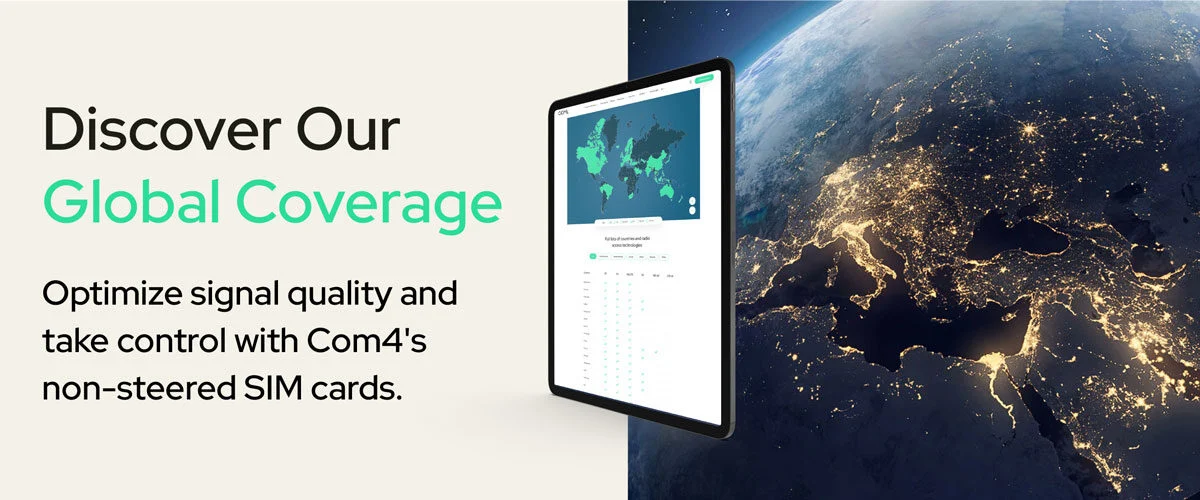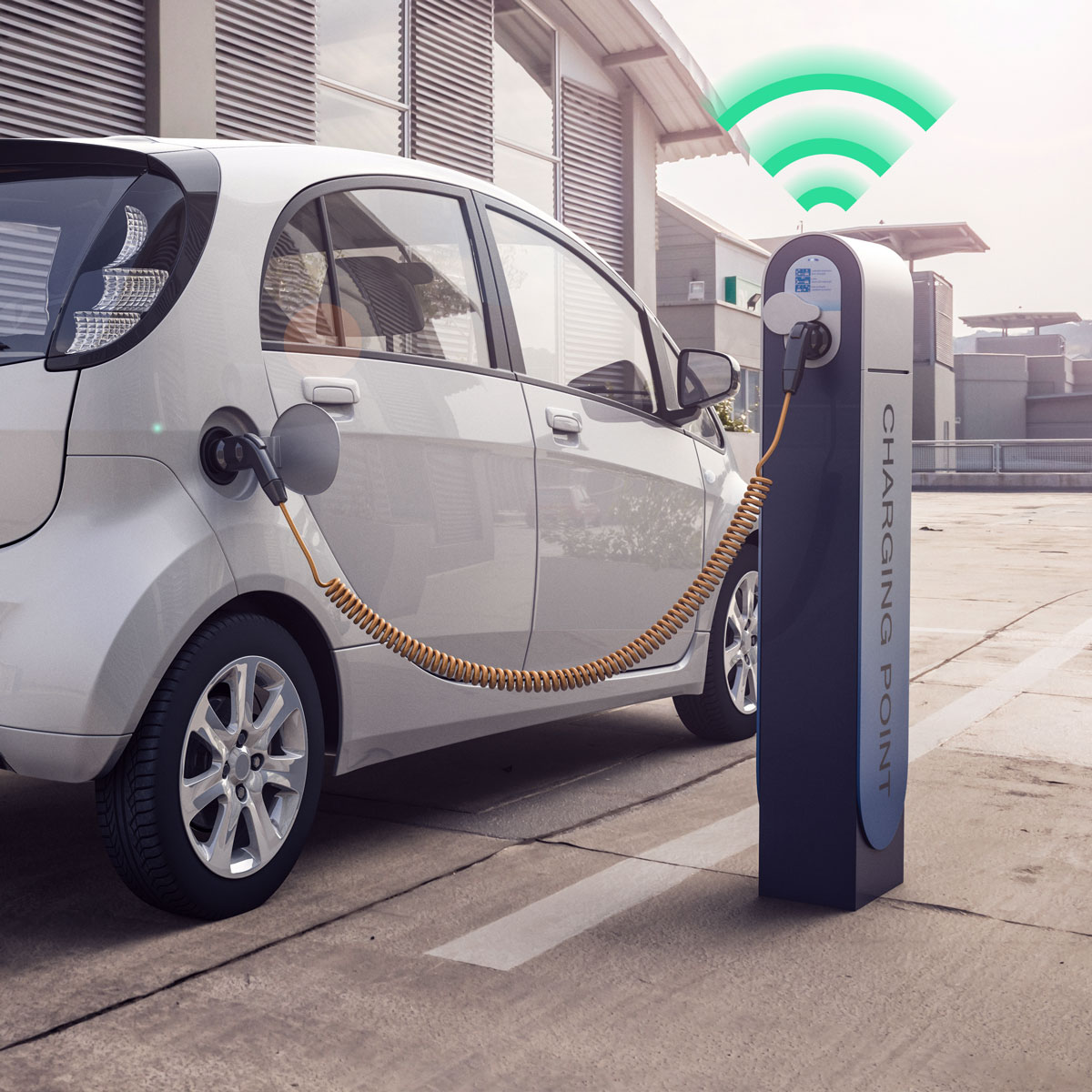IoT monitoring makes this possible. It uses sensors and smart devices to collect and share information instantly. With this data, organisations can spot issues early and improve performance. It also helps them make decisions based on facts rather than assumptions.
According to MarketsandMarkets, the global IoT-based Asset Tracking and Monitoring Market was valued at USD 5.02 billion in 2024. It is expected to grow from USD 5.69 billion in 2025 to USD 9.16 billion by 2029, at a CAGR of 12.8%. This strong growth shows that real-time monitoring is becoming a key part of smarter and more efficient business operations.
What is IoT Monitoring?
IoT monitoring uses connected sensors and devices to collect data from assets or systems in real time. It helps businesses track performance, detect problems early, and understand how their operations are performing.
The data is sent through reliable connectivity to a cloud or local platform. There, it is analysed and used to make decisions or take action. This process makes it easier to manage equipment, improve efficiency, and respond quickly when issues arise.
In simple terms, IoT monitoring turns everyday assets into valuable sources of information. It helps organisations make smarter, data-driven decisions.
Why is IoT Monitoring Important for Businesses?
IoT monitoring helps organisations maintain control, reduce risks, and operate more efficiently. By turning real-time data into useful insights, businesses can stay ahead of issues and make informed decisions.
Some key reasons why it matters include:
- Minimised downtime: Early fault detection allows maintenance teams to act before failures occur.
- Better visibility: Continuous tracking provides a clear picture of how assets and systems perform.
- Improved safety: Monitoring conditions such as temperature, vibration, or pressure helps prevent unsafe situations.
- Optimised performance: Data-driven insights support smoother processes and better resource allocation.
- Lower costs: Reduced manual checks and fewer breakdowns save time and money.
How IoT Monitoring Works
IoT monitoring starts with sensors connected to physical assets. These sensors collect information such as temperature, location, or performance data. The data is then sent securely through cellular or satellite networks to a central platform.
Once received, the data is processed and analysed to provide useful insights. It helps teams find issues early and improve performance. They can then make faster decisions with reliable, real-time data.
Here are some real-world examples of how IoT monitoring is used:
- Gomero - Uses IoT and AI to monitor electric grid components. With Com4’s Global IoT SIM Cards, grid data is transmitted securely to support predictive maintenance and reduce outages.
- Intellity - Deploys IoT cameras and motion sensors to improve construction site security. It uses Com4’s network to send instant alerts and lower on-site risks.
- Soundsensing - Uses IoT-based sound and vibration sensors to monitor building equipment. This supports preventive maintenance and helps reduce operational costs.
- MedThings - Connects IoT-enabled medical devices with Com4’s eSIM technology. This setup improves remote healthcare monitoring and enhances patient safety.
- Sensorita - Uses IoT sensors to track waste levels on construction sites. With Com4’s reliable connectivity, it optimises collection schedules and makes better use of resources.

6 Applications of IoT Monitoring Across Industries
IoT monitoring is widely used across industries to connect equipment and improve efficiency. It also helps prevent downtime by keeping systems running smoothly. By collecting real-time data from different assets, it gives organisations valuable insights. These insights help them make quicker and better decisions.
The examples below show how different sectors use IoT monitoring to manage their operations more effectively:
Industrial Equipment Monitoring
Manufacturers use IoT monitoring to track machine health and performance. Real-time data helps detect unusual patterns that could indicate faults or inefficiency. Gomero, for example, applies IoT and AI with Com4’s secure connectivity to support electric grid maintenance. This approach reduces equipment failure and improves overall reliability.Logistics and Fleet Monitoring
IoT monitoring enables logistics companies to follow vehicles and cargo in real time. Location and condition data help improve delivery planning and fuel efficiency. Just Eat Norway benefits from Com4’s cellular connectivity to keep operations connected and visible across routes. It ensures safer transport and timely deliveries.Healthcare Monitoring
In healthcare, IoT systems help monitor patients and medical devices remotely. MedThings and Dignio use Com4’s eSIM and connectivity solutions to send health data securely to care teams. This allows faster response to changes in patient conditions. It also supports better quality of care with fewer manual checks.Agriculture Monitoring
Farmers use IoT monitoring to track soil, livestock, and weather data. Reliable connectivity is crucial, especially in remote areas. Com4’s Global Satellite Solutions provide coverage for farms where standard networks are unavailable. This helps farmers optimise irrigation, protect crops, and reduce waste.Environmental Monitoring
IoT sensors monitor noise, air quality, and water levels to support environmental safety. Soundsensing uses Com4’s connectivity to gather sound and vibration data in real time. This allows early action when irregularities appear. Such systems help maintain compliance and improve public safety.Energy and Utility Monitoring
Energy providers use IoT monitoring to oversee networks and manage power flow efficiently. Sensors collect data on energy production and usage across multiple sites. With Com4’s reliable network, this information is shared instantly for analysis. It helps reduce downtime, improve energy distribution, and support sustainable power management.
Top 5 Benefits of IoT Monitoring
IoT monitoring helps businesses work more efficiently through real-time visibility and control. It supports proactive asset management, improves safety, and reduces operational costs.
- Real-Time Decision Making: IoT systems provide live data that allows teams to act quickly when conditions change. Fast access to accurate information leads to better and more confident decisions.
- Improved Asset Utilisation: Continuous tracking shows how assets are used and when maintenance is needed. This helps increase productivity and extend the life of equipment.
- Enhanced Safety and Compliance: Real-time monitoring detects unsafe conditions and faults before they cause incidents. It also helps organisations follow safety, operational, and environmental standards.
- Cost Reduction: Automated monitoring reduces the need for manual checks and unplanned repairs. It saves time, cuts costs, and keeps systems running reliably.
- Data-Driven Optimisation: Ongoing data collection helps businesses find trends and improve performance. It supports smarter planning, better resource use, and continuous improvement.
Technologies Powering IoT Monitoring
Several technologies work together to make IoT monitoring accurate, reliable, and efficient. These components help connected devices collect, transfer, and process data seamlessly across locations. Let’s look at some of the main technologies behind it.
IoT SIM Cards for Global Connectivity
IoT SIM cards provide secure and stable communication between devices across different regions and networks. Com4’s Global IoT SIM Cards and Connectivity Packages ensure consistent and reliable performance. They support real-time monitoring in industries where uptime and accuracy are essential.
Role of 5G in Real-Time Monitoring
5G networks offer faster data transfer and lower latency for time-sensitive applications. This enhances the accuracy of monitoring systems and allows instant responses when conditions change.
Cloud Platforms and Edge Computing
Cloud and edge computing work together to manage and analyse IoT data effectively. The cloud handles large-scale data processing and storage. Edge computing brings analysis closer to devices, enabling faster insights and reducing delays.
Choosing the Right IoT Monitoring Solution
The right IoT monitoring solution depends on how well it supports reliability, scalability, and security. A few focused factors can help guide the decision:
- Evaluate coverage: Ensure the provider offers global or regional network support to avoid data gaps.
- Check uptime performance: Look for service-level guarantees that ensure constant connectivity.
- Review data security: Confirm that the solution includes encryption and private network options.
- Assess device management tools: Central dashboards help monitor usage, alerts, and SIM activity.
- Test scalability: The platform should handle more devices as your operations expand.
- Consider integration: Make sure it works smoothly with your current software or analytics systems.
- Look for transparent pricing: Clear, flexible plans make cost control easier for long-term projects.
Future Trends in IoT Monitoring
The future of IoT monitoring will be shaped by smarter data processing, faster connectivity, and sustainable operations. Artificial intelligence will play a major role in driving predictive insights and automation.
According to Fortune Business Insights, the IoT analytics market is expected to grow from USD 35.51 billion in 2024 to nearly USD 154 billion by 2032. During the same period, IoT Business News predicts that satellite IoT will reach USD 4.7 billion by 2030. This will make it possible to extend monitoring to remote and hard-to-reach areas.
Digital twins and sustainable IoT systems will further improve operational efficiency. These technologies will help businesses cut costs, lower energy use, and reduce their environmental impact.
Summary
- AI will enhance predictive insights and automation.
- Edge computing will deliver faster data handling.
- Satellite IoT will connect previously unreachable areas.
- Digital twins will improve system testing and control.
- Sustainable IoT will support energy-efficient operations.
IoT monitoring is reshaping modern operations by turning real-time data into practical insight. It helps organisations improve efficiency, reduce downtime, and maintain safer environments. With secure connectivity and reliable solutions from Com4, businesses can build strong monitoring systems.
These systems offer scalability, dependability, and the flexibility to adapt to future technologies. As IoT continues to advance, companies that invest in intelligent monitoring today will stay ahead of the competition. It will give them a strong edge in tomorrow’s connected world.
FAQ
What is the role of IoT SIM cards in monitoring systems?
How does 5G improve the efficiency of IoT monitoring?
What are the most common IoT monitoring sensors used in manufacturing?
Can IoT monitoring be integrated with existing legacy systems?

.jpg)

.jpg?width=1200&height=675&name=iot-maintenance-1%20(1).jpg)




.jpg)

